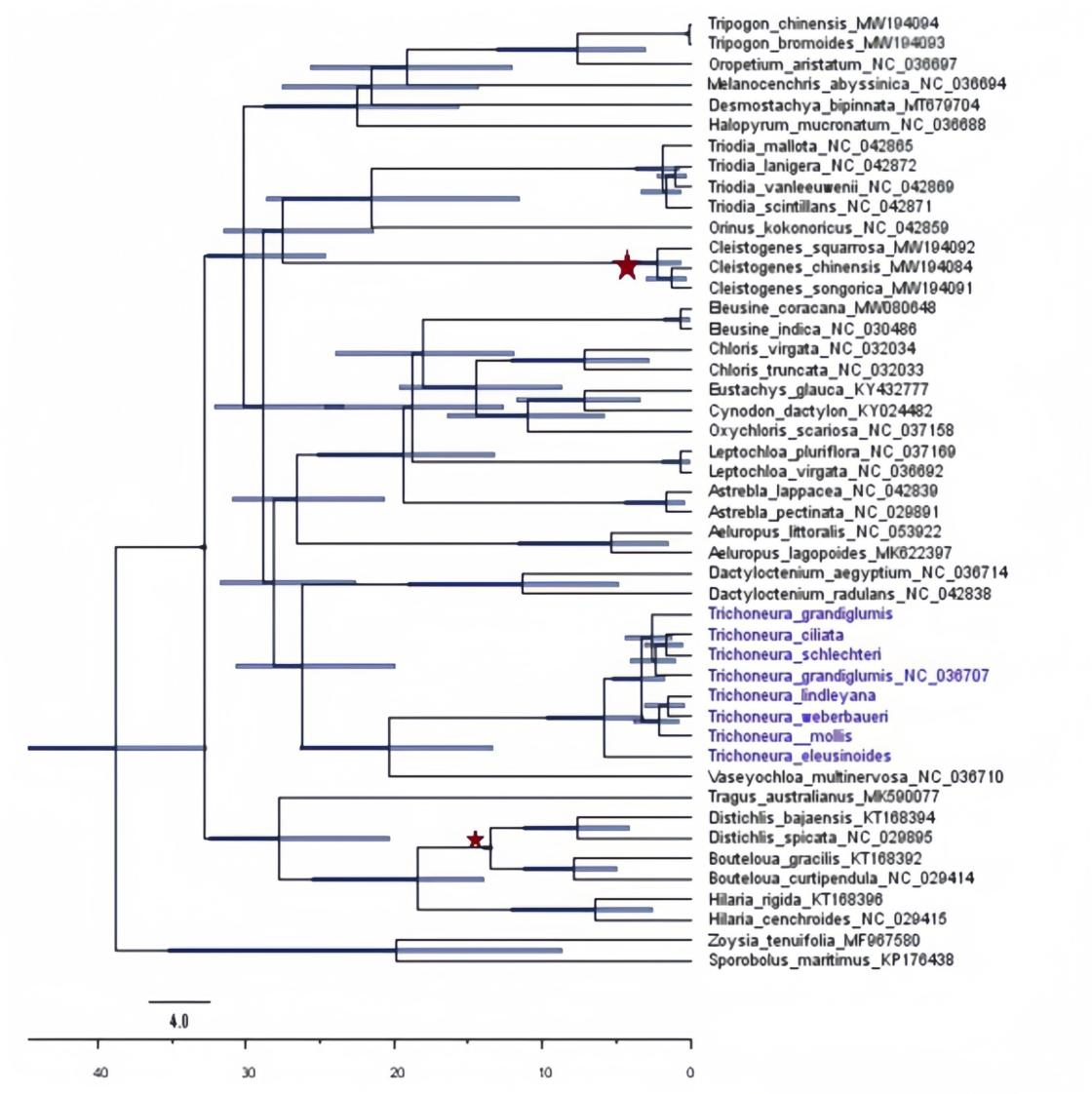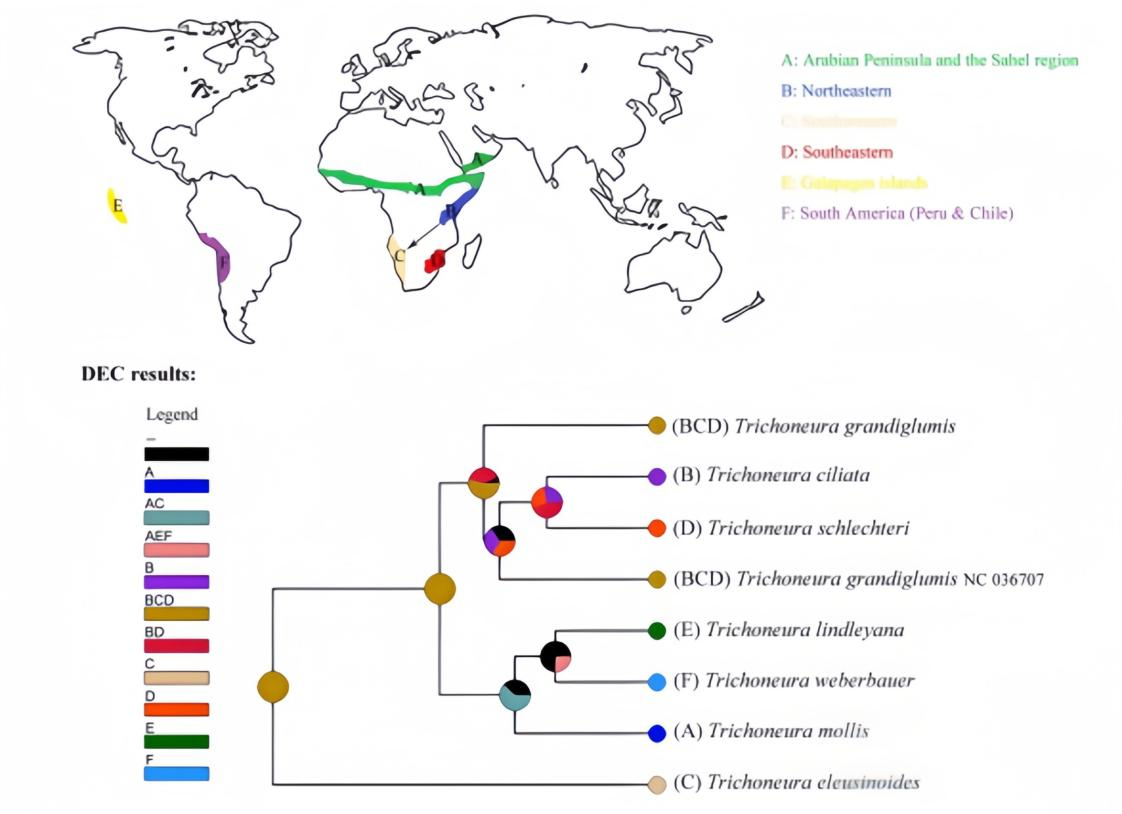
A recent study published in the Journal of Systematics and Evolution highlights the impact of the African arid corridor, a geological phenomenon from the Miocene epoch, on the evolution and distribution of the Trichoneura genus.
The African arid corridor is an arid region that formed during the Miocene epoch. It runs through central and southern Africa, effectively dividing the originally continuous forest ecosystem into multiple isolated habitats.
The research, led by Prof. HU Guangwan from the Wuhan Botanical Garden (WBG) of the Chinese Academy of Sciences, involved sequencing the complete chloroplast genomes and nuclear genes of seven Trichoneura species. The team then reconstructed the phylogenetic relationships and divergence history of the genus.
The findings indicate that Trichoneura originated in the late Miocene epoch, approximately 5.78 million years ago, coinciding with the creation of the African arid corridor. This geological event caused the fragmentation of Trichoneura plants, resulting in the evolution of distinct species adapted to various ecological niches.
"Our findings suggest that the African arid corridor acted as a major evolutionary force, driving the diversification of the Trichoneura genus," stated Prof. HU. "The timing of the genus's origin and the subsequent fragmentation of its distribution range are closely linked to the formation of this arid region."
The study revealed that Trichoneura was initially distributed in southwestern Africa, later spreading to northeastern Africa, South America, and the Arabian region through two dispersal events and one vicariance event. Notably, the genomic analysis of T. mollis, a widely distributed species in Africa, showed high similarity to T. lindleyana in South America, suggesting the possibility of trans-Atlantic dispersal.
Additionally, ecological niche modeling demonstrated the remarkable adaptability of Trichoneura species to arid environments. The simulation results indicated that these plants thrive in habitats such as semi-arid deserts, grass savannas, and tropical dry forests. Despite their fragmented distribution, the ecological niches of these species across different continents show significant overlap, illustrating a phenomenon known as "phylogenetic niche conservatism." The model also predicts that the suitable distribution area for T. eleusinoides may expand along the arid corridor into northeastern Africa, providing valuable insights into species migration in the context of future climate change.
These findings underscore the profound influence of the African arid corridor on the evolution of the Trichoneura genus and offer a detailed reconstruction of its ancestral distribution areas.

Figure 1. Schematic diagram of the distribution of Trichoneura in Africa (Image by WBG)

Figure 2. Estimation of divergence times of species in the tribe Cynodonteae based on 73 protein-coding genes (Trichoneura genus is shown in purple) (Image by WBG)

Figure 3. Ancestral area reconstruction of seven Trichoneura species (based on the DIVALIKE model in the RASP software) (Image by WBG)

86-10-68597521 (day)
86-10-68597289 (night)

52 Sanlihe Rd., Xicheng District,
Beijing, China (100864)

